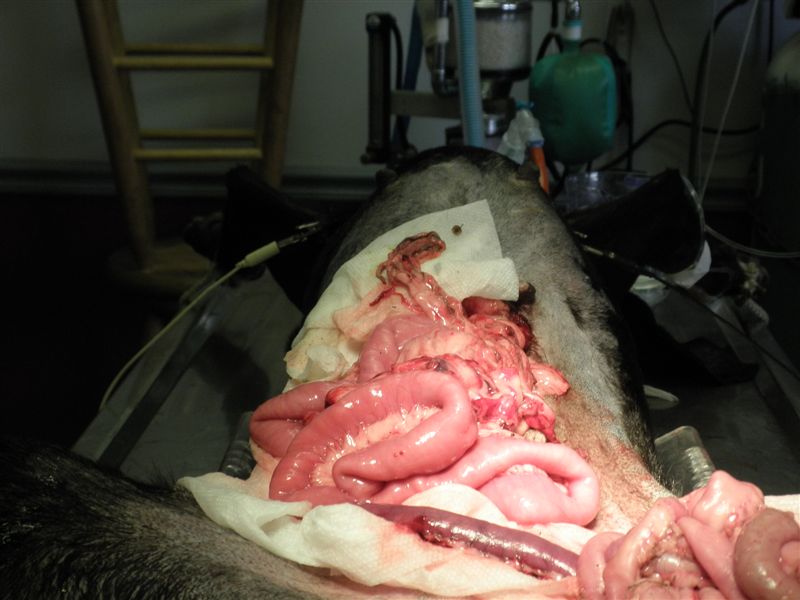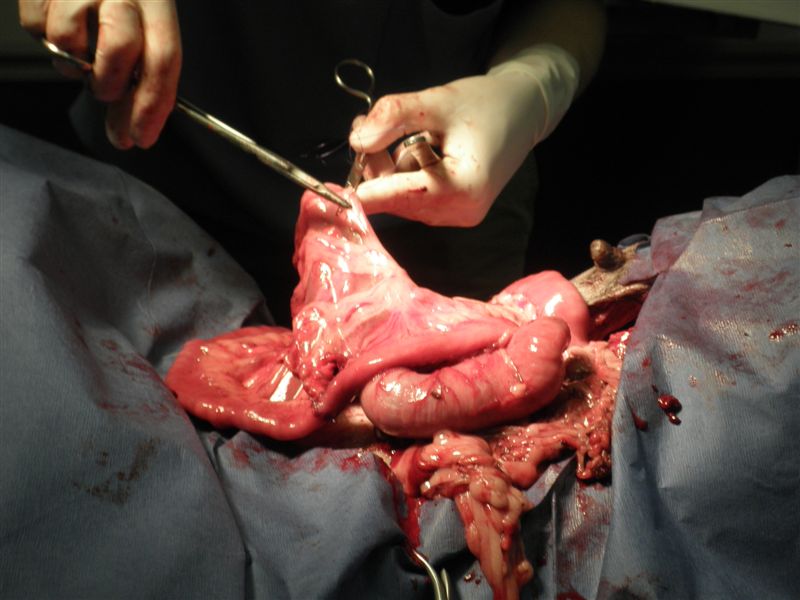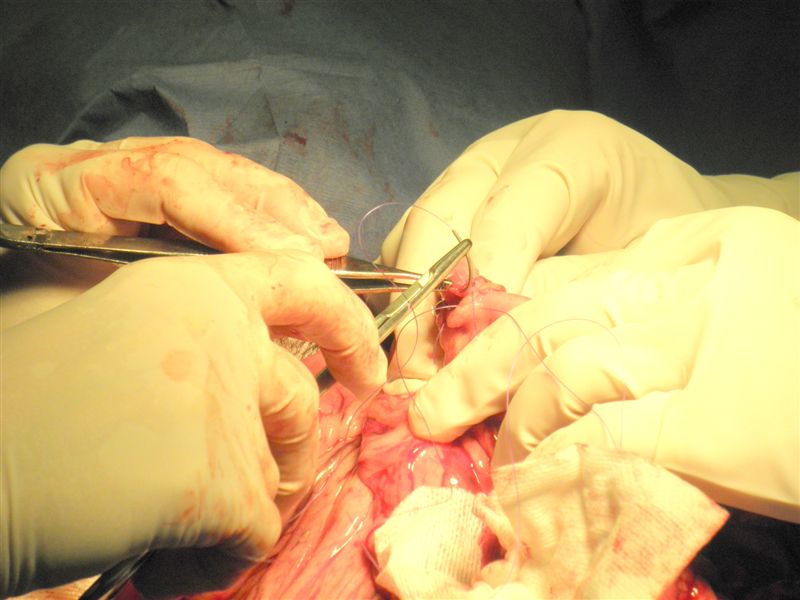Quincy Animal Hospital
1750 West Jefferson Street ~ Quincy, FL 32351 ~ Call us (850)875-4811
Quincy Animal Hospital
(850)875-4811
www.quincyah.com
|
Sassy's concerns are not of the sort that can wait so we proceed immediately to surgery (after placing an i.v. catheter and beginning i.v. antibiotics). She is injected with a fast-acting induction agent to sedate her and then an endotracheal tube is placed to allow oxygen and anesthetic gas to be administered. EKG leads are attached to monitor her heart rate and a pulse oximeter is attached to measure her oxygen saturation. A blood pressure cuff is attached to make sure that her blood pressure levels remain stable throughout the procedure. Then Sassy is turned onto her back and the cleaning of her skin begins. This is difficult due to the large section of intestines spilling out of her abdomen. Then the skin is scrubbed to be cleaned as well as possible. Meanwhile, the doctor is "scrubbing in" for surgery. The first step involves lavaging the exposed intestines to prevent dessication or drying of the intestines and to clean off some dirt. Then the abdomen is inspected to look for any unknown injuries. Besides the gastrointestinal tract, the abdomen looks uninjured (although VERY dirty/contaminated). The next step is to "run the bowel" looking for injuries and what sections of intestine are not saveable. If intestinal components have lost their blood supply, they will not survive and will become necrotic. This could lead to leakage of intestinal contents into the abdomen at a later date which will worsen the existing peritonitis. The toxins released from the dying sections of intestine can also lead to severe illness. Examination of Sassy reveals that approximately 8.5 feet of small intestine has lost it's blood supply and must be resected (removed). Resection of intestine is a delicate procedure because rough handling of the intestine may result in further damage. Also, the intestines form a long tube that carries food down the gastrointestinal tract. When you remove a piece of that tube you must connect the remaining parts so that an intact tube remains. For example, if you cut the middle out of a straw but didn't connect the two pieces on either side, you would be unable to bring fluid up the straw. But if you were able to connect the edges of the two remaining pieces (called anastamosis) you would end up with an intact (although shorter!) straw. Some difficulties with anastomosis are that the intestines have a different "tube" size or width throughout and the two ends that are being anastamosed may not match completely. You know from earlier that if there is not a tight seal on the anastamosis site you would end up with leakage and a worsening peritonitis. Angling the incision of the intestine can help minimize intestinal width differences. In Sassy this problem was easily corrected and the ends of the intestine were carefully sutured and formed a tight seal. The next problem is the mesentery, which is a layer of tissue that contains blood vessels that supply the intestines. Removing the intestines without accounting for the mesentery allows for a hole of tissue in which other sections of intestines could become entrapped. In Sassy's case we removed the mesentery from her abdomen that was attached to removed bowel and sutured together the remaining edges of mesentery to prevent the possibility of intestinal entrapment. The next issue to be addressed is the abdominal contamination. Most abdominal surgeries that we perform are sterile procedures - where we enter a closed, healthy abdomen with the incision of a sterile blade and then use sterile instruments holding sterile gloves to perform our tasks. In Sassy's case there were numerous sticks, leaves and dirt in her abdomen and the best we could do was lavage her abdomen. By lavaging, we took large quantities of warm, sterile fluid and poured into her abdomen and then removed to try to wash out most of the contamination. At this point, it is time to sew Sassy closed, give her some good pain medication and begin post-operative care. |




